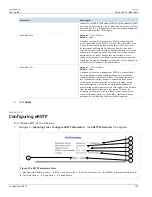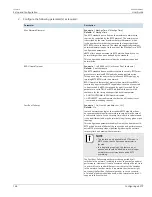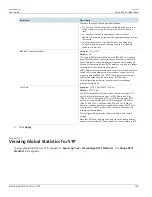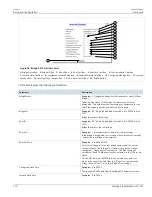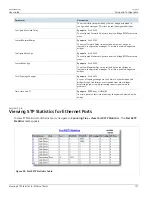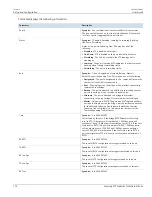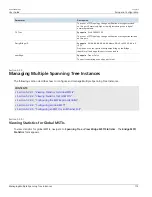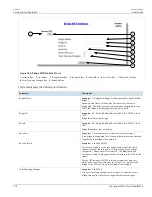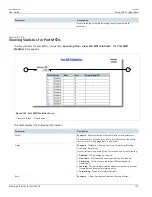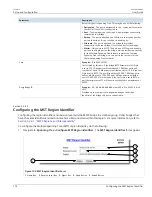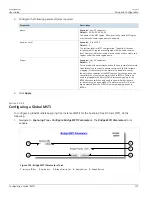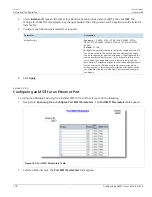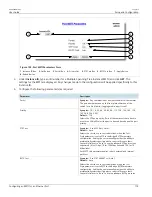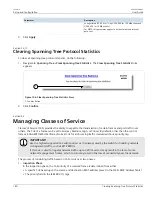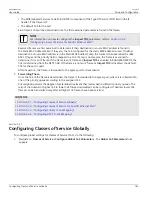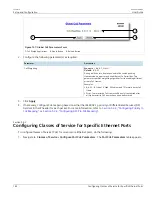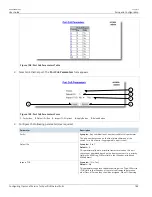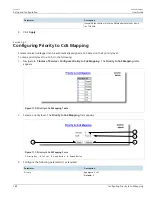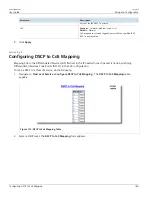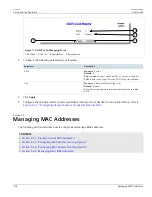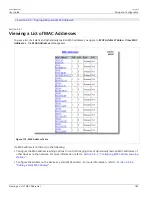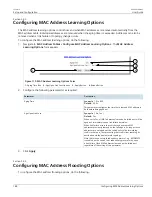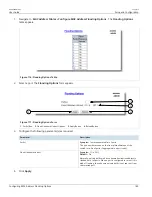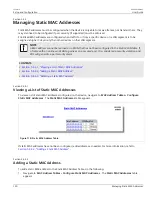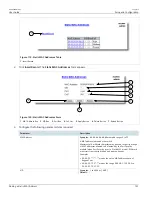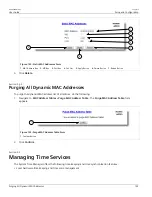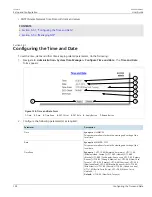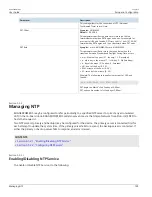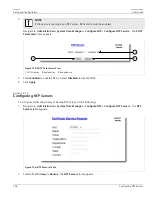
RUGGEDCOM ROS
User Guide
Chapter 5
Setup and Configuration
Configuring Classes of Service Globally
181
• The Differentiated Services Code Point (DSCP) component of the Type Of Service (TOS) field in the IP
header, if the frame is IP
• The default CoS for the port
Each frame’s CoS will be determined once the first examined parameter is found in the frame.
NOTE
For information on how to configure the
Inspect TOS
parameter, refer to
“Configuring Classes of Service for Specific Ethernet Ports”
.
Received frames are first examined to determine if their destination or source MAC address is found in
the Static MAC Address Table. If they are, the CoS configured for the static MAC address is used. If neither
destination or source MAC address is in the Static MAC Address Table, the frame is then examined for IEEE
802.1Q tags and the priority field is mapped to a CoS. If a tag is not present, the frame is examined to
determine if it is an IP frame. If the frame is an IP frame and
Inspect TOS
is enabled in RUGGEDCOM ROS, the
CoS is determined from the DSCP field. If the frame is not an IP frame or
Inspect TOS
is disabled, the default
CoS for the port is used.
After inspection, the frame is forwarded to the egress port for transmission.
2.
Forwarding Phase
Once the CoS of the frame is determined, the frame is forwarded to the egress port, where it is collected into
one of the priority queues according to the assigned CoS.
CoS weighting selects the degree of preferential treatment that is attached to different priority queues. The
ratio of the number of higher CoS to lower CoS frames transmitted can be configured. If desired, lower CoS
frames can be transmitted only after all higher CoS frames have been serviced.
CONTENTS
•
Section 5.3.1, “Configuring Classes of Service Globally”
•
Section 5.3.2, “Configuring Classes of Service for Specific Ethernet Ports”
•
Section 5.3.3, “Configuring Priority to CoS Mapping”
•
Section 5.3.4, “Configuring DSCP to CoS Mapping”
Section 5.3.1
Configuring Classes of Service Globally
To configure global settings for Classes of Service (CoS), do the following:
1. Navigate to
Classes of Service
»
Configure Global CoS Parameters
. The
Global CoS Parameters
form
appears.

